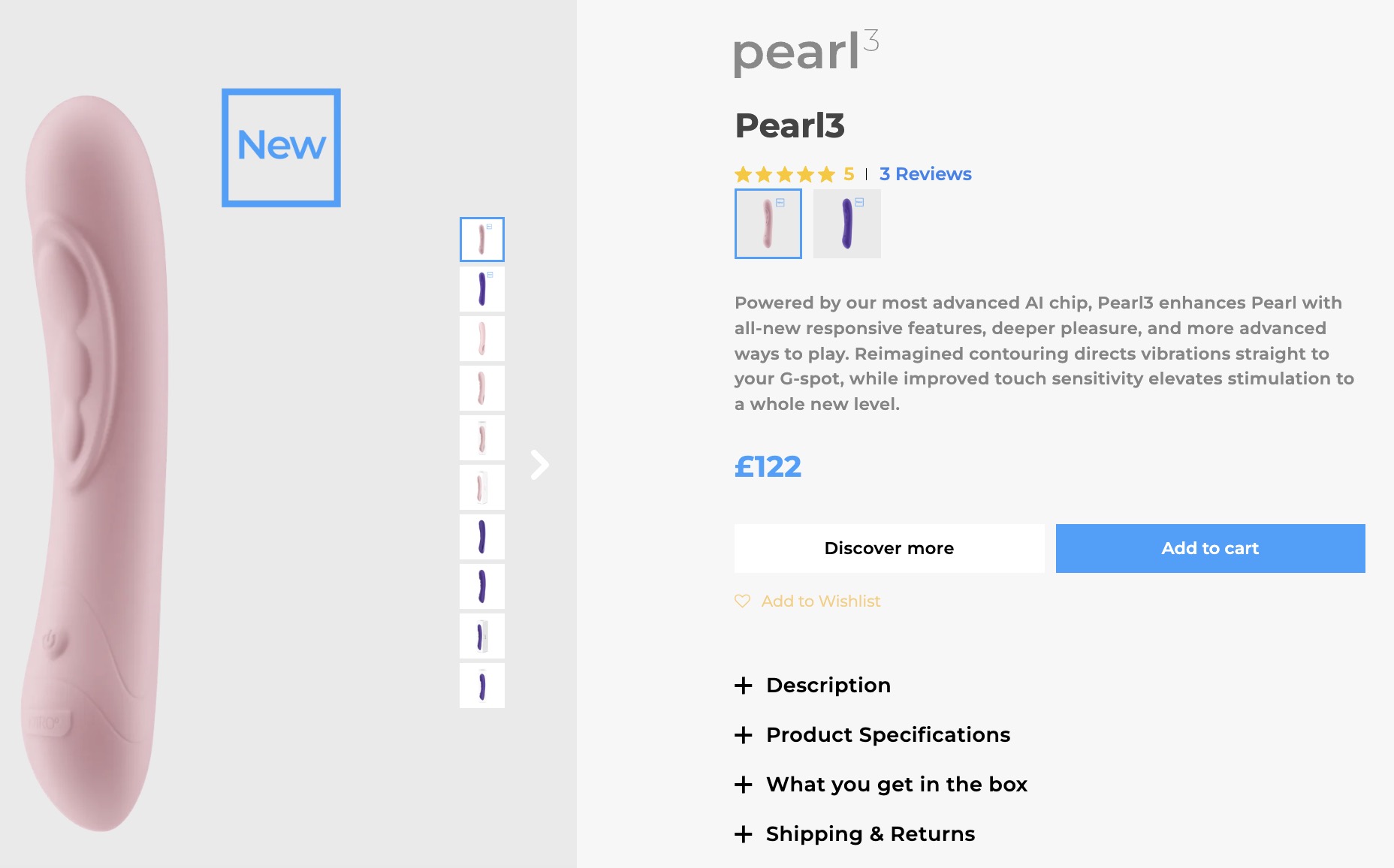Understanding the concept of home-made vibrators
Home-made Vibrators: Understanding the Phenomenon
A home-made vibrator is a device created using household items to provide sexual stimulation. Such vibrators have become increasingly popular due to their affordability and easy availability of materials required to make them.
- The concept of making a do-it-yourself vibrator may seem unconventional, but it has been around for decades.
- People resort to making these vibrators for various reasons, including lack of access to commercial vibrators or simply wanting a unique product.
- The process of creating a home-made vibrator can range from simple designs using everyday objects such as electric toothbrushes, to more complex gadgets including motorized mechanisms made from electronic parts.
- However, it’s important to keep in mind that safety measures should be taken into consideration when constructing such devices, as they are not regulated by any safety standards.
- Moreover, proper hygiene practices must be followed before and after using these homemade devices to avoid infections and diseases.
While some people may find the idea unusual or bizarre, one cannot deny the creativity that goes into creating such devices at home. Vibrators made from egg beaters or plastic bottles may seem like strange inventions but speak volumes about the innovative mindsets of some individuals.
It’s worth noting that although these homemade toys may provide pleasure during solo activities, they are not substitutes for professional advice or treatment in case of sexual disorders. Nonetheless, being curious and experimenting with one’s sexuality can lead to better self-awareness.
Fun fact: The art of crafting sex toys dates back centuries with ancient civilizations creating dildos out of stone and leather. (Source: Healthline)
Who needs a fancy, expensive vibrator when you can DIY your way to pleasure and savings at the same time?
Advantages of using a home-made vibrator
Using a personally crafted aid for self-pleasure has proven numerous benefits. Apart from being cost-effective, one can tailor it according to their preferences and ensure hygiene. One can experiment with different designs and materials, ensuring various forms of stimulation to achieve euphoria.
Further, creating one’s vibrator reduces the carbon footprint as most sex toys are made of non-biodegradable materials, which contribute to environmental pollution. One can transform household objects like an electric toothbrush or even a showerhead into a vibrating device, proving advantageous as it’s discrete and readily available.
Lastly, incorporating body-safe materials is vital when designing one’s vibrator. Using non-porous surfaces eliminates the growth of bacteria and minimizes the risks of infections. It also enables ease in cleaning and maintenance.
Pro Tip: Safety is paramount when creating anything that involves electricity; it’s essential to switch off all power sources before making any modifications. Be sure to test the vibration strength on your hand before testing it on any other body parts.
Safety considerations before building a vibrator
It is essential to adhere to safety protocols before embarking on creating a personal vibrator. The individual’s safety should be considered meticulously to avoid accidents, damages, or injuries.
- Choose suitable materials such as body-safe silicone, glass, or stainless steel.
- Ensure all the equipment is clean and sterilized.
- Check all electrical components for safety before building.
- Use a proper insulation system and avoid using metal parts near electrical components.
- Testing the vibrator before use to make sure it works correctly and safely.
Determine the appropriate size for the vibrator, as larger vibrators could cause injury. Additionally, ensure the materials are non-toxic, and the electrical components are positioned correctly to avoid malfunctioning.
Did you know that the first vibrator was developed in the 19th century as a medical device used to treat hysteria in women? (source: History.com) Trust us, you don’t want to use sandpaper or super glue in the construction of your DIY vibrator.
Materials to avoid when building a vibrator
Certain precautions must be taken when selecting materials to build a device that is meant for sensitive areas of the human body. To ensure users’ safety, certain materials should be avoided.
A table can be created to easily identify and avoid inappropriate materials when building a vibrator-based device. Some examples include using plastics containing phthalates or other harmful chemicals, metals that could cause skin irritation, or porous materials that cannot be thoroughly sanitized. Additionally, some lubricants should not be used with certain materials, as they could cause the material to break down prematurely.
It’s important to keep in mind that the integrity of the material is crucial for optimal performance and longevity of the device. Furthermore, avoiding cheap and unreliable materials will also prevent any harm or injury caused by the breaking down of parts during use.
To create a quality product for safe use, proper research and selection of appropriate tools are necessary. It’s essential to choose high-quality components that are meant for long-term use and frequent cleaning to avoid any potential health risks associated with improper maintenance.
Cleanliness is key, especially when it comes to the tools of self-love.
Proper hygiene practices to follow
Maintaining clean and sanitary practices is crucial before initiating vibrator construction.
- Wash your hands thoroughly before starting the building process.
- Wear gloves to avoid any possible contamination from hand oils or other bodily fluids.
- Sanitize all equipment used in the construction process, including tools, molds, and mixing bowls.
- Gently clean any electrical components with a damp cloth to remove dust particles.
- Once construction is complete, wipe down the final product with disinfectant wipes.
It is essential to ensure that all materials used in constructing a vibrator are safe for internal use and do not contain harmful chemicals or ingredients.
It is recommended that you clean and sterilize your newly constructed vibrator after each use thoroughly. This prolongs its lifespan and applies good hygiene practices to reduce the risk of infections.
When using chemicals to create a personalized silicone mold, always wear gloves and use these chemicals in well-ventilated areas. Additionally, you must read and understand all safety guidelines carefully before starting.
By implementing appropriate hygiene practices when creating your vibrator, it can minimize the risk of potential infections or injuries while ensuring an enjoyable and safe experience for users.
Who needs a Home Depot when you have a hardware store and some creativity for DIY pleasure?
Different options for building a home-made vibrator
Paragraph 1: There are various options available for creating a DIY vibrator that can be built at home efficiently and quickly. These vibrators can use household items and are customizable based on preference and need.
Paragraph 2:
| Materials | Description |
|---|---|
| Electric Toothbrush | Vibrating Head for petting |
| Shower Head | Direct water pressure for stimulation |
| Electric Razor | Vibrating handle |
| Cell Phone | Vibrate mode for touch |
Paragraph 3: Another unique option is to use food grade silicone and a vibrating motor to make a DIY dildo. It requires some skill, but it can be a fun and safe project to undertake.
Paragraph 4: Pro Tip – Always be cautious while using household objects; make sure they are hygienic, and clean them thoroughly to prevent any infections.
Sometimes you need to get creative with household items, just be warned that the toothbrush may never be the same again.
Using household items like electric toothbrushes or shower heads
When it comes to constructing a DIY vibrator, you can easily make use of widely available household items like automatic toothbrushes and showerheads. Here are some ways to craft your own massage device using these everyday materials:
- Use an electric toothbrush: the vibrating head can be used for clitoral stimulation while the handle can serve as a convenient grip.
- Try showerhead fun: with different water pressures and patterns, your showerhead can be a versatile appliance by diverse settings that range from strong pulses to easy waves, capable of producing thrilling sensations.
- Embrace creative usage: Some people have tried rolling pens or pencils inside condoms acting as vibration transducers, or simply using smartphones, which may produce mild albeit effective buzzing sensations.
- No Cost Methods that Work: touch yourself until you feel aroused enough to have an orgasm or play around with pillows and cushions that mimic the shape of a lover’s body part of choice.
It is important to note that homemade vibrators may not always be safe and proper precautions like boiling or sanitizing must be taken before and after every session. Remember to use them at your own risk.
With their ease of accessibility, these household items offer an affordable way to experience pleasure on a budget. Get creative in trying different techniques but make sure you’re staying safe while doing it!
Who needs a fancy vibrator when you can DIY your way to pleasure with just a motor and some basic electronics?
Building a vibrator using a motor and basic electronics
When it comes to crafting your own intimate devices, you may be curious about using a motor and basic electronics to build a vibrator. Follow these three simple steps for creating your very own unique device:
- Begin by selecting a small DC motor to power your device.
- Next, attach an offset weight to the output shaft of the motor which will create the vibration sensation.
- Finally, use a speed controller circuit board to adjust the frequency of vibration as needed.
To add a personal touch, modify the shape and size of your device’s case or housing. Keep in mind that you may also want to adjust noise levels depending on where and when you use it.
It is important to remember that building homemade vibrators requires more than just technical skills. You will need creativity as well as good safety practices in order to avoid injury or potentially dangerous electronic mishaps.
A friend once mentioned that they had built their own vibrator using everyday household items –a common electric toothbrush was one of them! They explained that while quirky, it was actually quite effective and discreet. This story proves that there are multiple creative ways to build your own personal pleasure tools if you put some thought into it.
Get creative with textures and shapes – after all, variety is the spice of masturbation.
Tips for enhancing the vibrator’s effectiveness
The effectiveness of your homemade vibrator can be optimized with these insightful tips to give you a more pleasurable experience.
- Experiment with different materials
- Pay attention to the shape and size of the vibrator
- Experiment with different vibration patterns and speeds
- Engage in foreplay before using the vibrator
- Try using lubricants for a smoother experience
- Clean your vibrator properly after each use
For an even better experience, try exploring other types of vibrators such as bullet, rabbit or G-spot vibrators.
Recent studies have shown that incorporating sex toys into one’s sexual repertoire can lead to higher levels of sexual satisfaction (Journal of Sex Research).
Just remember, if anyone asks, it’s a personal massager, not a DIY sex toy.
Discretion and privacy considerations when using a home-made vibrator
Maintaining privacy and discretion is crucial when using a self-made vibrator for personal pleasure. One should ensure that the device is stored in a safe and secure place, away from prying eyes, and thoroughly cleaned after use to avoid any traces of evidence.
In addition to these considerations, it is advisable to construct the vibrator using body-safe materials that eliminate any risk of injury or infection. Moreover, it is essential not to share the device with anyone else, as doing so may compromise personal privacy.
When using a home-made vibrator, one must also be cautious about noise levels generated by the device. To avoid arousing suspicion from roommates or neighbors, consider sound-proofing your living space or choosing alternative locations for personal pleasure.
To prevent accidental discovery of the DIY vibrator by housekeeping staff or family members, wrap it in discreet packaging or store it in an opaque container. These measures will go a long way in ensuring your comfort and confidentiality while using a homemade sex toy.
Overall, taking into account these considerations will help you maintain discretion and privacy when enjoying personal pleasures with your self-made vibrator.
Frequently Asked Questions
1. Is it safe to make my own vibrator at home?
Yes, it’s safe as long as the materials are body-safe and the device is properly sanitized before and after every use.
2. What materials can be used to make a homemade vibrator?
Silicone, glass, stainless steel, and certain types of plastics can be used to make a homemade vibrator. It’s important to avoid materials that could be toxic or porous.
3. Can I use household items to make a vibrator?
No, it’s not recommended to use household items to make a vibrator as they may not be safe or effective. Stick to materials designed for sex toys.
4. How do I clean a homemade vibrator?
Use warm water and mild soap to clean the vibrator before and after every use. If it’s made of non-porous materials, it can also be sterilized with boiling water or a special toy cleaner.
5. Can a homemade vibrator be as effective as a store-bought one?
Yes, a well-made homemade vibrator can be just as effective as a store-bought one, as long as it’s designed with the same principles in mind. However, it’s important to remember that not all homemade vibrators are created equal.
6. Are there any risks associated with using a homemade vibrator?
There is always a risk of injury or infection when using any type of sex toy, including homemade ones. It’s important to use caution and follow proper cleaning and usage instructions to reduce these risks.


